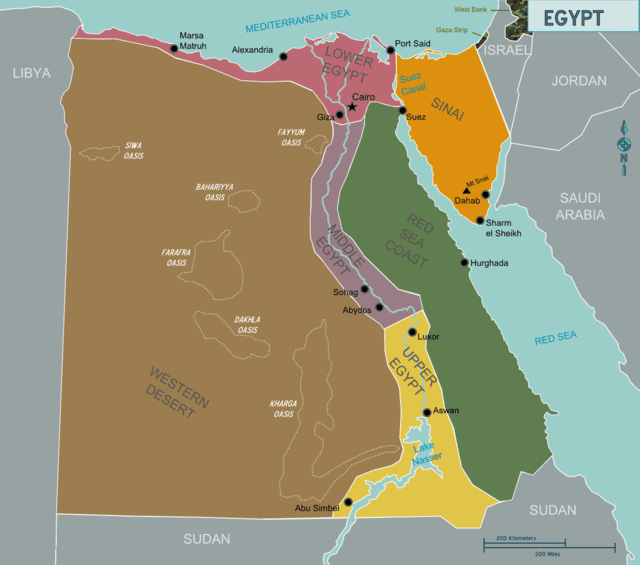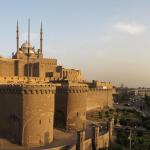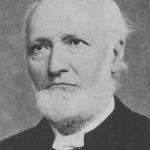
No day that begins with a visit to the pyramid plateau just outside of Giza can’t be all bad. But it has been a long day, including a flight from Cairo south to Aswan, and we need to be up at 3 AM for a long drive to Abu Simbel and back. So I’ll delay reporting on the day’s festivities until at least tomorrow.
But I’m going to share with you a few more passages, principally what might be termed “summary passages,” from BYU Studies Quarterly 61/4 (2022. A special issue, it was created by Stephen O. Smoot, John Gee, Kerry Muhlestein, and John S. Thompson, and is entitled A Guide to the Book of Abraham. I hope that they’re at least somewhat tantalizing; I hope that, if you’re interested, you will obtain a copy of the full volume and read it.
“Zeptah and Egyptes,” pages 101-106
Based on examination of the Kirtland Egyptian manuscripts, the authors say that our current Egyptuswas originally written as Zep-tah or Zeptah. Accordingly, the conclusion of this short section of the book is quite interesting: “So while we may not be able to currently answer these questions entirely what can be said is that the name Zeptah in the Book of Abraham is, arguably, authentically Egyptian. (106)
“The Name of the Lord,” pages 107-112
“Knowing something about the religious, mythical, and symbolic significance of names in the world of the ancient Near East thus helps us understand why the Lord revealed his name to Abraham in this specific narrative and theological framework. It also provides an ancient context that makes sense of Abraham’s account.” (111-112)
“Abraham’s Converts in Haran,” pages 113-116
“The subtle change in the Book of Abraham’s parallel passage to Genesis 12:5 [which is Abraham 2:15], accordingly, finds support both from ancient sources and from modern scholarship.” (115)
“The Plains of Moreh,” pages 117-120
“None of this is obvious from reading the King James translation of Genesis 12. So, even if the translation of the Book of Abraham is in some degree dependent on the KJV, the underlying narrative captures something deeper and more authentic to the ancient world of Abraham.” (120)
“The Abrahamic Covenant,” pages 121-124
“This structure helps make sense of the content of Abraham’s covenant and shows that “the covenant of the Book of Abraham follows the pattern of treaties and covenants in his day.” So while the content of the Abrahamic covenant is what is most important for Latter-day Saints today, the form or structure of the covenant as depicted in the Book of Abraham is one way the text can be grounded in the ancient world from which it purports to derive.” (123)
“Did Abraham Lie about His Wife, Sarai?” pages 125-128
Using the Book of Abraham and a great deal of ancient material, this article argues that Abraham may not actually have been lying when he identified Sarai as his sister, rather than as his wife. I was a little bit surprised to see no mention in this chapter of Thomas W. Mackay, “Abraham in Egypt: A Collation of Evidence for the Case of the Missing Wife,” BYU Studies Quarterly 10/4 (): 429ff. (https://scholarsarchive.byu.edu/byusq/vol10/iss4/6/). Perhaps I simply missed it.
“Abraham the Seer,” pages 129-133
“The running theme of Abraham as a seer adds a level of depth and narrative sophistication to both the Genesis account and the account of Abraham’s stargazing in the Book of Abraham.” (133)
“Abrahamic Astronomy,” pages 134-137
“This could explain why the Book of Abraham contains an apparently prescientific description of the cosmos rooted in the ancient world. This could only be feasibly accomplished if Abraham communicated to the Egyptians and likened the cosmos to gospel truths in ways they understood. . . . [T]he cosmology in the text can . . . be grounded in the ancient world.” (137)
I can’t help but be reminded, in this context, of the approach taken in the fourth chapter of John H. Walton and D. Brent Sandy, The Lost World of Scripture: Ancient Literary Culture and Biblical Authority (Downers Grove IL: IVP Academic, 2013), which is entitled “Proposition 4: the Bible Contains No New Revelation About the Workings and Understanding of the Material World.” In it, .the authors reiterate that proposition often enough that even the slowest of their readers will eventually get the point that, in their view, the Bible contains no new revelation about the workings and understanding of the material world. (See my blog entry “Genesis 1 versus Science?” (https://www.patheos.com/blogs/danpeterson/2023/08/genesis-1-versus-science.html)
“Shinehah, the Sun,” pages 138-141
“So while the Egyptian word for the sun itself is not the same as in the Book of Abraham, one of the Egyptian words for the sun’s ecliptic (the path of the sun through the sky) as attested in Abraham’s day is.” (141)
“Kolob, the Governing One,” pages 142-149
“While questions about the identification of Kolob still remain, there are some very tantalizing pieces of evidence that, when brought together, reinforce the overall plausible antiquity of this astronomical concept unique to the Book of Abraham.” (149)
“The Divine Council,” pages 150-154
“One thing that differentiates the Book of Abraham’s account of the Creation from the biblical account in Genesis is that the Book of Abraham mentions plural Gods as the agents carrying out the Creation.” (150)
“Over time, a consensus has been reached that the Bible does indeed portray a multiplicity of gods, even if there remains individual scholarly disagreement over some of the finer details.” (151)
“In contrast to typical Jewish and Christian belief in Joseph Smith’s day, the Book of Abraham frankly depicts a plurality of Gods and even uses specific language (‘took counsel among themselves,’ Abr. 4:26) that invokes the presence of what is now widely recognized by scholars as the unquestionably ancient concept of the divine council.” (152)
The authors cite an extremely interesting parallel in the grave stela of Tjetji, an important administrator under the early Eleventh Dynasty (ca. 2134-2060 B.C.) pharaoh Intef II. (152-153)
“In any case, with the exception of the Bible, the surviving ancient texts that overtly depict the divine council were unknown in the Prophet’s day. While the theological implications of the divine council remain to be fully explored and articulated, what can be said with a fair degree of reasonableness is that the Book of Abraham’s depiction of the divine council shares features present in other ancient Near Eastern texts, some of which date to Abraham’s day. This reinforces belief that the Book of Abraham is authentically ancient.” (153-154)
Posted from Aswan, Egypt













